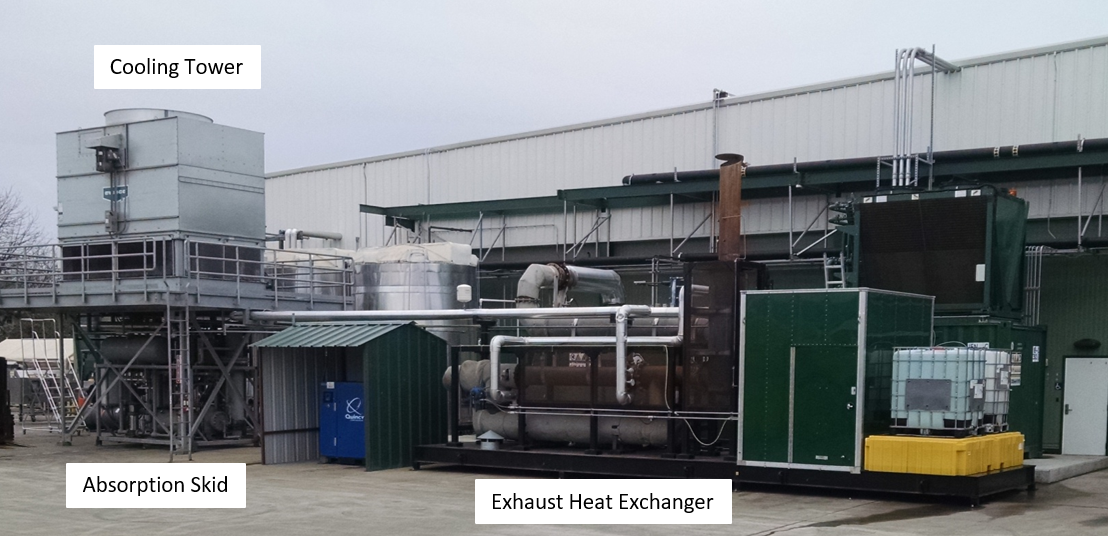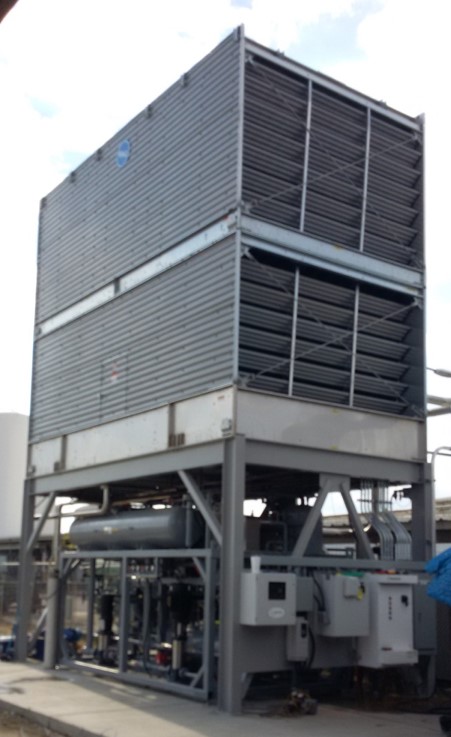- Home
- About Us
- Absorption Process
- Applications
- Publications, Technical Papers, News Releases
- Patent Estate
- Case Studies
- Energy Links
- Contact Us
(410) 266-6521
Get Our News
Sign up below to subscribe to our news
CHP: Combined Heating and Power
CHP allows facilities to generate power on-site, to avoid peak electric charges from their local utility, and to be assured of power availability during all weather and curtailment situations. On-site generation also allows use of local renewable resources such as biogas. Using the waste heat produced from the prime mover allows CHP installations to operate at far higher energy efficiency than typical grid power.
Historically, CHP has been associated with power and heat or power and air-conditioning. However, ECC technologies are the only commercially viable option to produce sub-freezing refrigeration from CHP waste heat. They can also provide, air conditioning and/or heat-pumped hot water.Typical applications include
- Food processors, Breweries, Wineries
- Cold storage warehouses
- Ice rinks, Ice making
- Industrial/Lodging/Microgrid/District chilling
Download the Thermochiller evaluation tool. For initial evaluation in typical applications. Does not represent full range of product capability.
ECC has several CHP installations ranging from 20RT icemaking, to 160 RT cold storage, and 250 RT food process chilling.
InstallationsCentral Coast, California Veggie Producer ThermoChillerA vegetable processing plant in Santa Maria California is now benefitting from 125 tons of refrigeration powered by waste heat instead of electricity. The waste heat is from a low emission gas-fired 633 kW reciprocating Jenbacher engine cogeneration package, in the form of hot water between 175°F and 221°F. The 125 ton Thermochiller ammonia absorption refrigeration plant (“TC125”) delivers a Coefficient of Performance of 0.63. Both the exhaust heat and jacket heat are converted to 10°F refrigeration at the equivalent of 63% efficiency. The TC125 has a compact footprint of seven feet by eleven feet. The cooling tower is mounted above it to save valuable plot space. It operates completely automatically, adjusting to any engine loading. When the engine starts and stops, the TC125 cycles between Run and Standby. It accommodates wide variations in chill glycol flowrates and temperatures. It is remotely monitored via the internet. 
125 RT ThermoChiller Central Valley, California Cheese ProducerA 250 RT ThermoSorber (TS250) produces 28oF chilled water for a cheese making plant. This ammonia absorption refrigeration plant's first claim to being green is that it is powered by engine waste heat from two 600 kW enginesgensets. Further, the engine is powered by renewable methane, from manure in an anaerobic digester.. In addition, waste heat from the refrigeration plant supplies useful heat to the dairy and achieves over 65% year round energy efficiency. TS250 uses exhaust and jacket heat from the engine. 
250 RT ThermoSorber Economics and Environmental Benefits
Useful Links |
